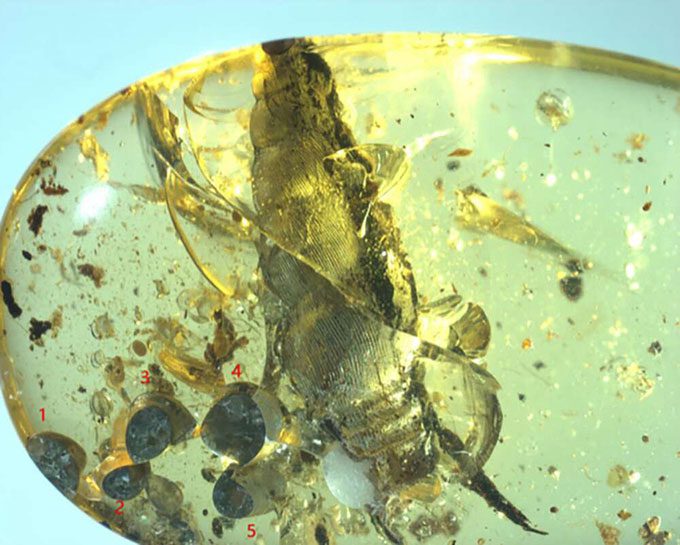A Mother Snail and Her 5 Hatchlings Perished as Tree Resin Covered Them, Solidifying into Amber.
Scientists discovered the remains of a mother snail and her five newborns trapped in a 99-million-year-old piece of amber in northern Myanmar, as reported by IFL Science on June 9. The new research was published in the journal Gondwana Research.

A family of snails perished under a layer of tree resin. (Photo: Tingting Yu).
Snails are rarely well-preserved. Most of the information that scientists have about their distant past comes from studying shells or the imprints that show their body shapes. Therefore, this new discovery is particularly significant, especially with the addition of five newborn snails, the smallest of which was still connected to its mother by a trail of mucus.
“It seems that the snails were covered by tree resin just after they were born, and then they were preserved in that position for millions of years. The mother snail must have sensed the impending disaster. It raised its antennae in a ‘red alert’ position,” said Adrienne Jochum, a researcher at the Senckenberg Research Institute. The team of experts is unsure why not a single member of the snail family escaped the disaster. They speculate that the mother snail might have been too exhausted after giving birth.
The piece of amber is very clear, allowing scientists to observe the snail family in detail. However, Jochum and her colleagues also used CT scanning methods to study their internal structures.
Just the fact that snails give live birth is an important discovery. Some species of terrestrial snails today give live birth, and experts have previously found evidence of this occurring 19 million years ago. However, egg-laying remains much more common. This may have also been true during the Cretaceous period, but the discovery raises many new questions for scientists. This is also the oldest evidence recorded of live birth in snails.
Jochum and her colleagues named the new species Cretatortulosa gignens. They believe that giving live birth might be an adaptation to protect young snails from predators. It is puzzling that these young snails were unable to avoid the encroaching tree resin. Perhaps 99 million years ago, giving live birth offered more benefits to snails than it does today. However, the research team is still unclear about the exact reasons.
“Like their modern relatives in the Cyclophoroidea family, the newly discovered snail species likely lived quietly on dead and decaying leaves. We believe that their young, compared to egg-laying snails, are smaller in both number and size to increase their chances of survival,” Jochum noted.



















































